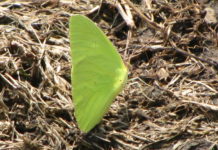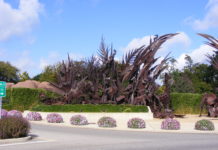Photo credit: DiasporaEngager (www.DiasporaEngager.com).
Potato portfolios
In many Andean communities, smallholders grow 50 or more native potato landraces in the same plot. That diversity provides varied culinary and nutritional qualities, as landraces contain different levels of vitamins and minerals. It also increases farmer resilience, since landraces have varied tolerance to diseases, pests or environmental stressors. Nevertheless, those threats inevitably eliminate some varieties from farmers’ plots, which makes conservation and reintroduction important for Andean communities.
René Gómez, the genebank’s potato curator and a co-author of the study, launched efforts to return native potato diversity to Andean communities in 1997, in San José de Aymará. As the initiative expanded, San José de Aymará became a multiplication hub, growing accessions from the genebank to produce virus-free seed potatoes for distribution nationally.
According to Nelissa Jamora, an agricultural economist with the Global Crop Diversity Trust and another co-author, whereas genebanks usually repatriate varieties following natural disasters, CIP has partnered with communities to help them cope with recurring threats and increase the biodiversity on their farms.
“On-farm crop diversity is essential. We know from many cases how disastrous it can be for agrifood systems when farms are homogenous. One disease can wipe out livelihoods in a short period of time,” Jamora says.
Multiple benefits
Higher yields and on-farm diversity have multiple benefits. By forging alliances with non-profit organizations and government programs, farmers in San José de Aymará formed a cooperative and opened a business, Agropia, which produces native potato chips and other products for national and export markets.
Gómez explains that farmers who plant virus-free seed potatoes enjoy higher yields, and because Andean farmers’ traditionally sell or trade seed potatoes with others in their areas, farmers in communities beyond those reached by program have benefited from healthy seed and greater potato diversity.
“Every year, representatives of new communities contact me to request seed potatoes for landraces they’ve lost,” says Gómez. “Many farmers in the high Andes know about this program and want to participate in it.”
“We are very proud of this initiative,” says Azevedo. “It is a win-win collaboration for farmers and the genebank.”
Source of original article: International Potato Center (cipotato.org).
The content of this article does not necessarily reflect the views or opinion of Global Diaspora News (www.GlobalDiasporaNews.com).
To submit your press release: (https://www.GlobalDiasporaNews.com/pr).
To advertise on Global Diaspora News: (www.GlobalDiasporaNews.com/ads).
Sign up to Global Diaspora News newsletter: (https://www.GlobalDiasporaNews.com/newsletter/) to start receiving updates and opportunities directly in your email inbox for free.

































